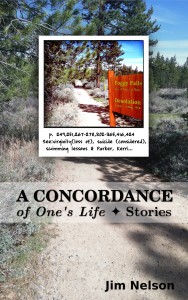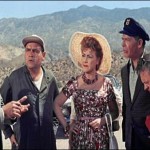 I now owe Eric Zassenhaus twofold, both times in relation to my short story “The Obituarist”. (Shameless plug: “The Obituarist” is in my in new short story collection A Concordance of One’s Life, now available as an e-book at Amazon, soon to be available at Kobo and Apple’s iBook store.)
I now owe Eric Zassenhaus twofold, both times in relation to my short story “The Obituarist”. (Shameless plug: “The Obituarist” is in my in new short story collection A Concordance of One’s Life, now available as an e-book at Amazon, soon to be available at Kobo and Apple’s iBook store.)
The second time Eric came through was this morning. He alerted me to a New York Times Insider story that went up on August 29th, two days ago. “Obituaries for the Pre-Dead”, penned by Times staff obituary writer Margalit Fox, is an insider’s view of researching and writing obituaries. This is an amazing bit of synchronicity for me, as August 29th was the same day North American Review posted my essay “Origins of The Obituarist” regarding my struggles five to six years ago to write a short story about a Times staff obituary writer. (A selection from the story can be found here, where I first announced the NAR essay.)
In the conclusion of my NAR essay sits the first time Eric helped me in regards to “The Obituarist”. In April, Eric posted on Twitter a link to Mickey Rooney’s AP obituary and noted that it was partially written by a now-deceased staff reporter. As insensitive as this sounds, I chuckled when I read it, as this strange situation in journalism is prominent in “The Obituarist” and something I pondered a great deal while drafting it. To handcraft and polishing story after story fretting they’ll only make it to print after one has perished is just one phylum of neuroses endemic to the writing profession. I made a mental note of Rooney’s obit and, months later, included it in my NAR essay as the concluding flourish.
Now flash ahead to this morning, when Eric again sent me a link, this time to Margalit Fox’s Times piece on obituary writing. That’s two I owe you, Eric.
I’m agog reading Margalit Fox‘s wonderful essay. I dearly wish I’d had access to it years ago when I was researching and drafting my story. As I wrote for NAR, the sundry details of the obituary-writing profession is underdocumented (and is crying out for a nonfiction or New Journalism tell-all, if one hasn’t already been published). Day in and day out, to research and write these miniature biographies of the living in preparation for their deaths (as well as the responsibility of selecting your subjects, a journalistic dead pool), I have to believe this is the kind of writing life few aspire toward. It’s certainly something newspapers don’t appear to discuss much. Perhaps I didn’t dig deep enough in my research six years ago, but what little I’ve read about obituary writing (obituarism?) since then appears as a trickle compared to the discourse on other aspects of journalism, like investigative reporting or sports writing.
The synchronicity of the timing is one thing, but Maraglit Fox’s writing voice mirrors my own obituarist’s voice so much, I shuddered reading her piece. Here’s Fox on her profession:
For my colleagues and me, the world cleaves, portmanteau-style, into two neat compartments: the dead and the pre-dead. In the singular view of human existence that we obituary writers come to hold, it is the only truly meaningful taxonomy.
And my obituarist:
My editors and my fellow obituarists have a little list, The Nearly Departed we call it, celebrities and politicians and artists and authors whom we agree are not long for this world. The unlucky are crossed off the list the same day their obit hits the back pages of the Times. The unluckier are those added when that slot opens.
It was also a relief to see so much of what I’d guessed at verified by Fox. On obituary research:
One of the most stressful aspects of reporting an advance entails, when feasible, telephoning its pre-dead subject for an interview. This is one of the stranger social predicaments in human experience and, trust me, there is nothing in Emily Post to cover it.
My obituarist on the same:
I interview their colleagues and relatives under a variety of pretenses. Ethically I’m bound to supply my name and the name of my publisher, but beyond that, ethics take on a certain…plasticity. When I say I need a quote for the Sunday supplement, which Sunday? Which supplement?
…I maintain and revise obituaries for three, eight, sometimes twelve years. Maintenance consumes much of my time, for the type of elderly I follow are forever hunting up one more notable achievement to stuff and mount. The fire that drove them into the public sphere decades ago burns on.
Fox on the eventual publication of her toil:
Then, when the time comes, a writer or editor has only to drop in the when, the where and the how of the death, an act known in obituary parlance as “putting the top on the story.”
(How I wish I’d known of this parlance!) Here’s my obituarist with some of my own invented argot:
Publication awaits a heart attack, a drug overdose, a plane crash. A missed step on an icy set of stairs outside a packed Georgetown auditorium, a broken neck twisted gruesomely in the snow, the limousine driver aghast at the fall he’s witnessed, a double-click of my mouse, and the politico’s obituary arises from The Freezer, ready for its final revision and publication. … A heartbeat ceasing is tacit permission to publish. Death seals an obituary.
And Fox on subjects outliving their obituarist:
Subjects can live so long, in fact, that they survive the writer. When that happens, if the byline is celebrated enough — and the writing too good to consign to the dustbin — our editors may decide to publish the obit, as if from beyond the grave, once its subject has joined its author. The result is a vivid journalistic status symbol the author will never see.
As mentioned. this was the central issue my own obituarist faced:
Most of the stories in The Freezer will be published after my death. There is irony in that somewhere. When I understand that irony, perhaps I will then accept my mortality. It has not happened yet.
If I had given my obituarist a name, it should have been Robert McFadden. As Fox explains:
The most vigilant among us is undoubtedly Robert McFadden, our Pulitzer Prize-winning obit-writing colleague at the paper, whose job is devoted entirely to advances and who, as of this writing, has 235 of them on file.
In my story I goofed the numbers (my obituarist has written thousands, not hundreds, of obits) and my character never won a prize, let alone a Pulitzer, but this devotion to the form is exactly what I’d hoped to capture. My character’s initial reluctance to pursue obituary-writing as his chosen profession was followed by eventual bittersweet acceptance, finally topped off by him announcing his retirement and requesting his own obituary:
I told [my editor] to conjure up a replacement and send him over so he could begin my entry. There are flexibilities with and within my profession, but writing one’s own obituary is bending the reeds too far.
It doesn’t sound like McFadden and Fox ever questioned their decision to write obituaries, and they may have well looked forward to it when they first begun. I wanted to write about someone less eager, someone with their eyes on a different literary career who discovered, in the thick of it, that their calling was penning the death notices of the celebrated and famous.
At the bottom of it all, I remain amazed people like Fox and McFadden exist, although rationally I knew they did before I even started my first draft. Fox also gave me the opportunity to relive the questions I had about their line of work and, lacking much primary source material, the answers I ultimately (and delicately) chose. Part of the creative process for “The Obituarist” was putting the logic of the pieces I had in my hands together and, with a bit of guesswork, surmising the experience of a lifetime of quiet and unrecognized authorship, of anonymously writing about the living as though they were dead.
“The Obituarist” is available in my new collection of short stories, A Concordance of One’s Life, available as a Kindle e-book at Amazon (and coming soon to Kobo and Apple’s iBook store).



